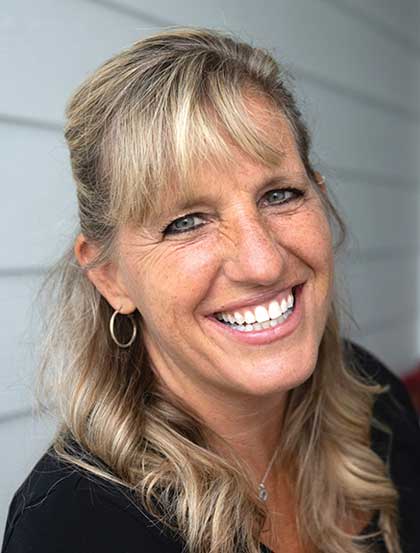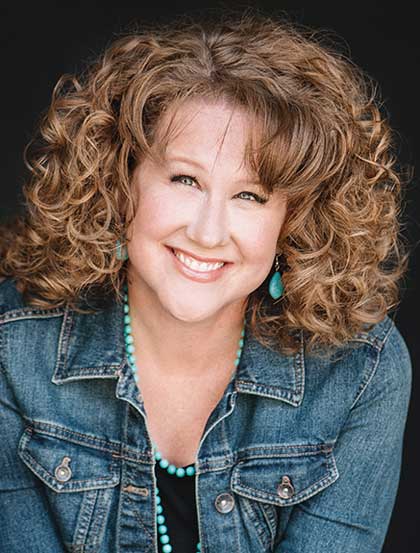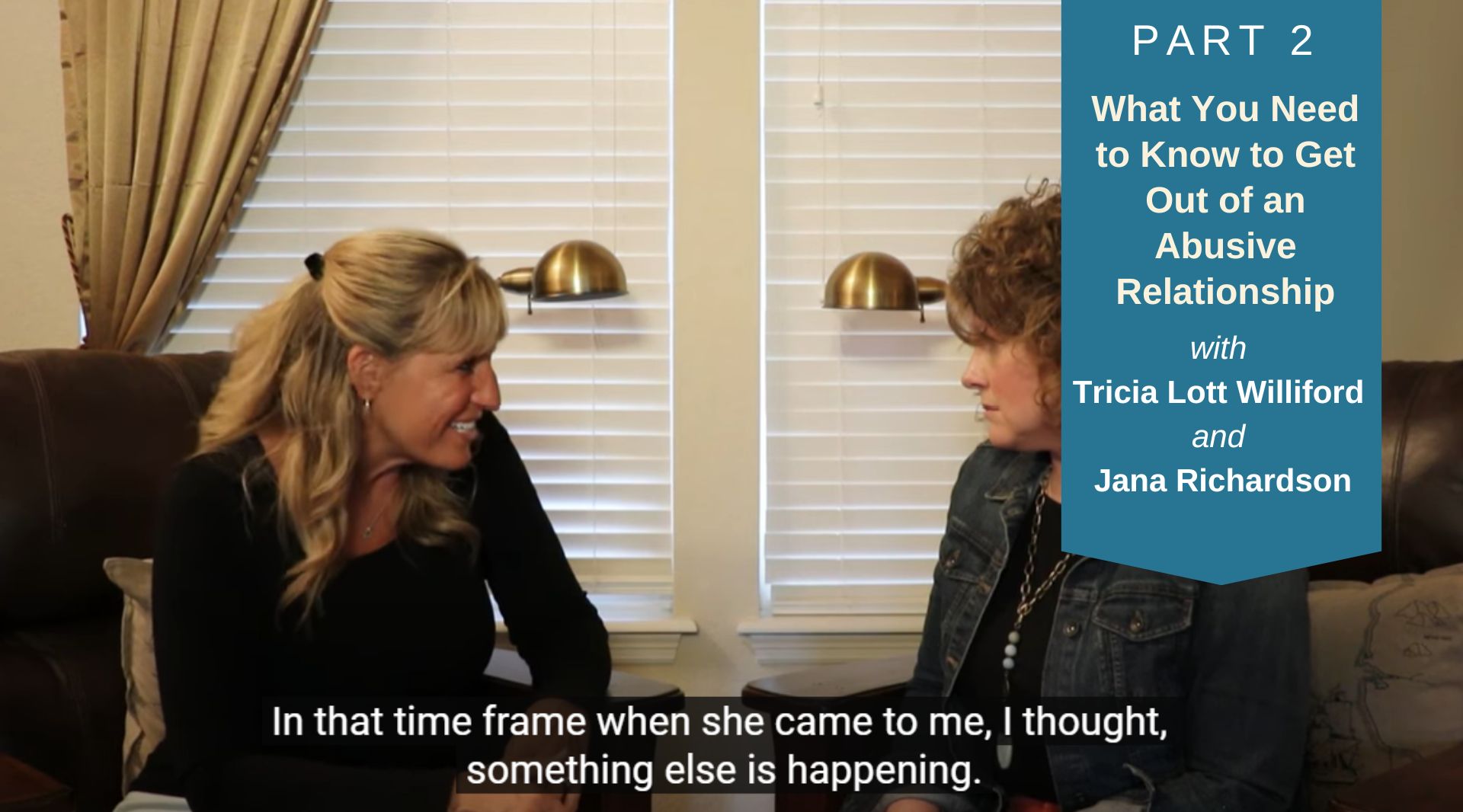This is the second article in a two-part series from the book, You are Safe Now: A Survivor’s Guide to Listening to Your Gut, Healing from Abuse, and Living in Freedom. In this post, co-author and therapist Jana Richardson, MA, LPC, EMDR, gives helpful insights for those suffering in an abusive relationship, including three steps to take to separate yourself from your abuser. In this article, the abuser’s is named “Annie”.
If you are a disciplemaker, a pastor, a church leader—someone who cares for the spiritual needs of others, you will want to read this article.
In the first article, co-author Tricia Lott Williford (abuse survivor) tells part of her story. She shares not only what she knows now, but six things she didn’t know then. In releasing this deeply vulnerable story, Tricia hopes to help others caught in the dark web of abuse. You can read the first article here.
Watch this video from Tricia and Jana to familiarize yourself with this story.
JANA’S PERSPECTIVE AS A THERAPIST
Victim blaming is the practice of questioning what the victim could have done differently to prevent a crime or offense from happening. It implies that the fault of the crime lies with the victim, rather than the perpetrator. Victim blaming is sometimes more subtle than overt, and people may lean toward blaming the victim without even realizing they are doing it.
Questions like What were you wearing? or Why were you alone with them? are examples of blaming the victim. Statements like You should have been more careful or That would never have happened if you had left immediately are examples of blaming the victim.
A person shouldn’t have to “be more careful” or “leave immediately” in order to stay safe from the harmful choices of another person.
When abuse occurs, it is the perpetrator’s fault.
It is never the fault of the victim.
Being the target of a perpetrator’s manipulation and abuse is traumatic in itself, but being blamed for the perpetrator’s actions, even subtly or unconsciously, may lead a victim to feel as if they are under attack once again. The risk of victim blaming is the reason a lot of people live in their shame for far too long as it cycles into further depression, anxiety, and post-traumatic stress.
Tricia’s pastor did not victim blame. He clarified who was at fault, and he helped Tricia cut off contact so that her abuser would be dissuaded from reengaging. He partnered with her to guarantee her safety.
When cutting off ties with an abuser in your life, there are actual steps to take to keep yourself safe.
Three Steps to Safely Escape an Abusive Relationship
Download the three-step escape strategy:
Prepare an exit strategy. First, if you’re living in the same physical location, it’s important to prepare to exit. Tricia was not living with Annie, so she didn’t need to take some of these steps. But when I worked in a women’s shelter, helping women flee abusive relationships, we asked important questions before we helped the women mobilize: Did you collect all the paperwork you would need for you and your children? Did you get money? Do you have clothes for you and your children?
Protect yourself. Next, even if you don’t live with the abuser, you still need to have systems in place to protect yourself. Have a support system you can trust, people who will not reveal your location. Do you need to get into a shelter? Get out of state? Go to a friend who can protect your safety and anonymity? Know your safe place, and know your safe people.
Make a list of your friends. Make a map. How are people connected? Where do they cross over, including social-media connections? People who overlap may not be safe. If they have contact with that person, they are not safe for you. They may reveal things about you. You may need to put boundaries up with other people, those who cross over in the space between you and your abuser. If your social circle is enmeshed in theirs, you may need to sever connections with people who were connected to them. On social media, use the Block button as needed.
A previous victim of Annie’s set this perfect example for Tricia. When Tricia reached out for guidance on how to get out of this toxic web, the survivor said, “I want to talk to you, but I can only talk to you if you are not talking to her.” That is the kind of protection I am talking about. Know your safe place, and know your safe people.
People may choose to protect you, and they may choose not to protect you. You need to be safe, emotionally and physically. You need to be safe always. Sadly, this means that your world may get very small for a while. Let go of anyone who will not keep you safe.
Most of the suffering we see in the world is related to love and loss, and our role as therapists is to acknowledge, experience, and take on the reality of that love and loss, including its pleasure and heartbreak, what is good and bad about all that has happened. The only thing that makes it possible to do the ongoing labor of trauma work is the awe I feel at my patients’ commitment to surviving. They endure dark nights of the soul, sometimes traveling them time and again, on the long path to recovery.

Jana Richardson, MA, LPC, EMDR
Jana Richardson is an experienced therapist in the Denver area with expertise in counseling victims of trauma, grief, and addiction.

Tricia Lott Williford
Tricia Lott Williford has written fifteen books in the last thirteen years. She has authored six titles under her own name and nine titles as a ghostwriter in collaboration with other authors, including a gold medalist, an Emmy award-winning journalist, and a candidate for President of the United States. Her work has appeared on the New York Times Bestseller list, and she has written with Penguin Random House, St. Martin’s Press, LifeWay, Tyndale, and NavPress. Tricia championed The Pen and The Page, a weekend writing retreat attended by hundreds of adults; she co-hosts the popular podcast Let’s Talk Soon; and during the school year, she teaches fourth grade at an elementary school near Denver. Tricia’s newest book is called You Are Safe Now: A Survivor’s Guide to Listening to Your Gut, Healing from Abuse, and Living in Freedom.

